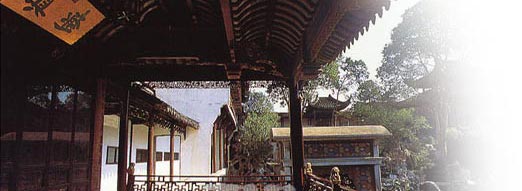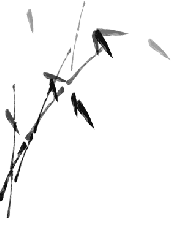| |
|
The images of the topic are from People Education Press, More detailed information, please visit their site: http://www.pep.com.cn/zgjj/index.htm
Collects antique chinese furniture pieces from Shang, Warring State period, Han, Wei, Qi and Jin, Sui, Tang, Five Dynasty, Ming, Qing. It will give you a complete idea about Chinese Antique Furnitures.
| Shang, Warring State Period |
|
|
| |
| |
| Han, Wei, Qi and Jin |
|
|
| |
| |
| Sui, Tang, Five Dynasty |
|
|
| |
| |
| Ming |
|
|
| |
| |
| Qing |
|
Chinese Antique Big Cabinets:
Traditional Chinese cabinets can be divided into two styles according to origin: North and South.
North cabinets are usually simple, clear and smooth. South cabinets are likely to have more carvings, painting and other decorations.
Red, dark yellow and black are the common colors.
By size, we have so called big(large) cabinets and small cabinets today.
Through thousands of years history, different styles of antique cabinets are reserved till now and with the spread of reproduction techniques, many antique cabinet can be available in good condition at present. More and more factories which specialize in refurnishing of old furniture are emerging and developing. It's a booming industry for people begin to realize the value of old furniture.
From antique cabinets, we can mostly find the content of old Chinese culture and history. And it's also a good selection for home decoration.
Large cabinets are fantastic. They have so much storage space with good looking. Small cabinets are adaptable by a bed or sofa.
Chinese Antique Small Cabinet:
They are convenient to find a place to put in home and increase the attraction of your home.
Chinese Antique Tables:
There are many different shapes and sizes for Chinese tables. However, we can divide them into five main styles:
Square tables, round tables, long tables, short tables and side tables with drawers.
For square tables, we have got 4 people tables and 8 people tables.
Round tables arrow more people to sit together. It also means "reunion" in Chinese.
Altar tables are the most common long tables. They are usually long and narrow and used to be placed against the back wall and carried offerings to the gods and ancestors.
Before Tang and Song dynasties, people sat on the ground in the home, so tables were very short at that time. Though standard tables were gradually developed, the short table styles were also reserved. In north China, winter is cold and people set up Kang, a large heated platform made from brick or unbaked clay. It plays the role of beds. And they are usually much larger than beds. They are not only for sleeping, but for meals and many other activities.
These kinds of short tables can be used as coffee tables in homes today.
Side tables with drawers are usually standard height tables. They can be used as office tables, studying tables, meal tables, lady's desk or dressing tables, bedside tables, etc.
Chinese Antique Trunks:
Trunks and money chests have been very popular in Chinese rooms.
The trunks have been mostly used to put clothes in the bed room. Ancient Chinese did not hang their clothes but would have folded and placed them in a wardrobe or trunk. They would often have been stacked on top of each other.
People today use trunks not only in bedrooms but in rooms to need storage space. And we can also enjoy the beautiful paintings on the front of them.
Among all the trunks in different places in China, Tibetan trunks are unique with its flavour and Buddha culture shown on the trunks.
Chinese antique Chairs
We can find many chair styles, such as round chairs, lamp hanger chairs, official's hat chairs, rolling chairs, etc.
Round Chairs have comfortable round shape arms for you to put your arms on them.Lamp hanger chairs are simple, side chairs without arms, and have a characteristic back rail in the shape of a yoke or lamp stand.
Official's hat chair have arms and on top of the back there's a crest rail that extends beyond the vertical posts. The shape looks like the hat of official's hat.
Rolling chairs can be put at the balcony or garden and people can lie on it-a chair for relaxation and comfort. You can even sleep on it as on the bed.
Many chairs have good carvings, lacquers and other decorations.
Chinese Antique Beds:
Many styles of Chinese antique day beds, big marriage beds, opium beds,
platforms, couches and canopy beds.
Low platforms, which were used as honorific seats, were the earliest type of raised seating furniture to appear in China. Sitting platforms were called ta; the relatively longer chuang was used both for sitting and reclining. By the Tang dynasty (618-907 AD), the platform had increased in height with decorative panels or kunmen-shaped openings decorating the sides.
"When daybeds (ta) were made in ancient times, although the length and width were not standardized, they were invariably antique, elegant and delightful when placed in a studio or room. There was no way in which they were not convenient, whether for sitting up, lying down or reclining. In moments of pleasant relaxation they would spread out classic or historical texts, examine works of calligraphy or painting, display ancient bronze vessels, arrange dishes of food and fruit, or set out a pillow and woven mat."
Wen Zhengheng, Early 17th century
Wen's descriptive imagery recalls painted scenes from the Song and Yuan paintings wherein scholarly gentlemen recline on platforms surrounded with the trappings of the literati lifestyle.
During the late Ming, some sophisticated connoisseurs preferred the archaic style of the box-style platform over the modern daybeds with free-standing legs. Although the old tradition gave way to popular fashion, some limited use continued throughout the Qing dynasty (1644-1912).
Daybeds
Open-frame daybeds were popularized during the Ming dynasty (1368-1644), and their use gradually eclipsed the old, box-style platform. Traditional styles included simianping and waisted forms with cabriole legs or horsefeet.
A miniature wooden daybed found in the tomb of Pan Yunzheng (d. 1589) near Shanghai reflects a classical 'waisted corner-leg' -style typical of the late Ming period.
Daybeds of 'recessed-leg' style were also typical of the late Ming period, including both those of round-leg style as well a those with mitered bridle joints and legs shaped with flanges.
Being relatively lightweight, the daybed was well-suited for impromptu gatherings, and was often arranged with other furnishings on a terrace or in the garden where fresh air and natural impressions could be enjoyed.
In a makeshift study arranged on a garden terrace, the daybed served as a place for quiet relaxation and contemplative meditation or as a platform from which to engage in lofty conversation. Such tented arrangements also provided a comfortable place to sleep during the hot summers nights.
The refined gentleman also found idle pleasure playing the qin while seated upon a daybed arranged in a garden pavilion.
Writing in the early 17th century, Wen Zhenheng recommended a simple daybed (ta) for a gentleman's sleeping quarters; his suggested arrangement!with a couple of stools and a small table set to the side!corresponds closely to scene painted by Qiu Ying some 50 years earlier.
Therein, a gentleman relaxes leisurely upon on a simianping daybed, and while reclining against a backrest, looks out upon an enclosed private garden.
Couch Beds
Although the use was similar to the daybed, the couch bed (chuang, luohan chuang) is distinguished by railings, which render it as a more formal piece of furniture. The development of railings may be related with the early placement of screen panels around the back and sides of the platform, which enhanced the sitter as well as provided privacy and protection from drafts.
This practice gradually gave rise to decorative railings attached to the seat frame of the platform.
By the Ming dynasty, the box-style platform had developed into the more sophisticated open-structured, corner-leg form.
Railings were made in various styles; those configured as throne-like stepped panels are evident from the early Ming period. Literary references also record use of decorative stone for couch bed railings during this time.
Railings were frequently decorated with carving, inlays, or painted lacquer. By the late Ming period, advanced joinery techniques permitted the abandonment of the reinforcing floor stretcher.
Contemporary to the fashion for hardwood furniture during the late Ming and Qing dynasties, the couch bed was frequently made with plain solid panels of naturally figured wood or with intricate lattice patterns displaying auspicious wanzi, jingzi, or 'carpenter's square' motifs.
Bamboo was also a favorite material of construction for couch beds!especially the prized speckled bamboo.
Couch beds contrived from roots also appeared during the the late Ming and Qing dynasties, at a time when Daoist traditions!expressed through rusticity and humble natural materials!became fashionable for those with leisurely lifestyles.
Canopy Beds
The platform bed was naturally extended with surrounding screen panels or tented awnings to provide nighttime enclosure. The canopy bed is thus characterized by a super structure fitted to the top of the bed, which was enclosed with panels and/or hung with draperies. This room within a room provided private space that was further insulated from drafty quarters.
Four-post canopy beds, which were common during the Ming period, were typically draped with fabric around the outside of the frame that suited to the season. Pongee silk or thick cotton provided insulated during the cold winters; gauze netting, provided relief was from annoying insects during the summer without diminishing the refreshingly cool evening breezes. Silk curtains for a lady's bed were often finely embroidered with decorative and auspicious patterns.
Curtains were drawn back during the day with curtain hooks, and the cozy cubicle continued to be utilized for dining, socializing, and other daily activities.
Six post canopy beds exhibit a somewhat more architectural style. The curtains were generally hung on the inside of these beds so as to reveal its decorative lattice-work and/or open-carved panels. Those decorated with marble panels were highly prized during the late Ming period.
The alcove bed is yet a larger piece of furniture that fits upon base with floor boards. An extension in front provides space for a small table, cabinet, and/or stool. The alcove bed is described in the Ming carpenters manual Lu Ban jing, and a miniature wood model illustrated below was dicovered in a tomb near Shanghai dated to the late 16th century. A similar full-sized example made from huanghuali wood is exhibited at the Nelson-Atkins Museum of Art, Kansas City.
Some other home decorations:
Some other home decorations can also be included in antique furniture such as:
Carvings Bamboo Accessories
|

